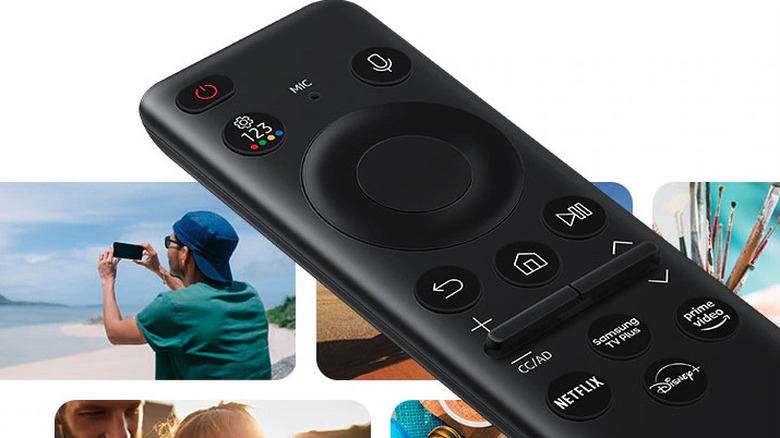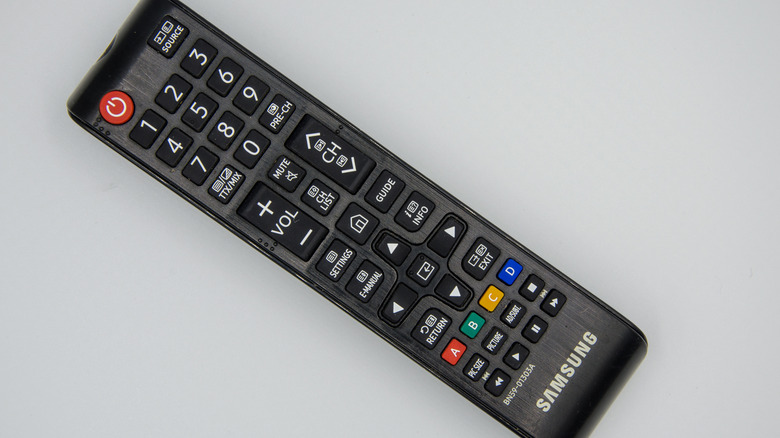What Are The Four Colored Dots On A Samsung TV Remote
When many of us think of a TV remote, we imagine a straightforward device that allows us to control our TV from a distance, like when we're comfortably seated on our living room couch. We'd probably be right if we were talking about remotes from a decade ago. However, the smart TV era has changed everything. If you've ever picked up a Samsung Smart TV remote, depending on the model you were using, it may have stood out to you for its minimalist design or the many buttons crammed into every available inch. Older remotes had a button for everything; newer ones do more with less.
What the two remotes have in common is that there's a learning curve before mastering their use. That's because it's not always obvious what each button does. That holds true whether you're dealing with a crowded layout or a minimalist design with cryptic icons. Something that's stumped many users is the four colored dots (buttons on older remotes) that don't have any clear labels explaining their functions. Unlike the buttons that are shortcuts to popular streaming services or basic controls like volume and input, these colored dots and buttons stare back at us as if we're supposed to just know what they do. While it may be tempting to ignore the colored dots, it turns out they're not just random colors. Those red, green, yellow, and blue dots act as context-specific shortcuts designed to make it easier to move through menus and apps.
The purpose of the four colored buttons on a Samsung TV remote
Colorful dots aren't unique to Samsung TV remotes; remotes from brands like LG also have colored buttons that provide shortcuts to special functions. On newer Samsung remotes, you'll find the settings icon, the numbers 1, 2, 3, and the colored dots (red, green, yellow, and blue) all on the same button that's located directly below the power button. Press the button once to open the quick settings menu on your TV, twice to bring up the on-screen number pad, and a third time to access the colored buttons window. On older Samsung remotes, there are actual physical buttons in those same colors that are used for context-based shortcuts.
Samsung's Tizen OS finds itself towards the bottom half of our ranking of every major Smart TV OS based on features for various reasons, but features like the colored buttons still offer useful shortcuts when they're supported. The function of the colored dots and buttons is determined by the feature you're using, so their role will change depending on what's on your screen. You might see them trigger options like subtitles, audio settings, or other app-specific features. Samsung is tight-lipped about exactly what they do, but with a little trial and error, you'll start to get a feel for how they work in different menus. You won't have an option to use the colored buttons on every screen, but when they're available, you'll see prompts or icons that match the red, green, yellow, or blue colors, letting you know which button to press for a specific action.

